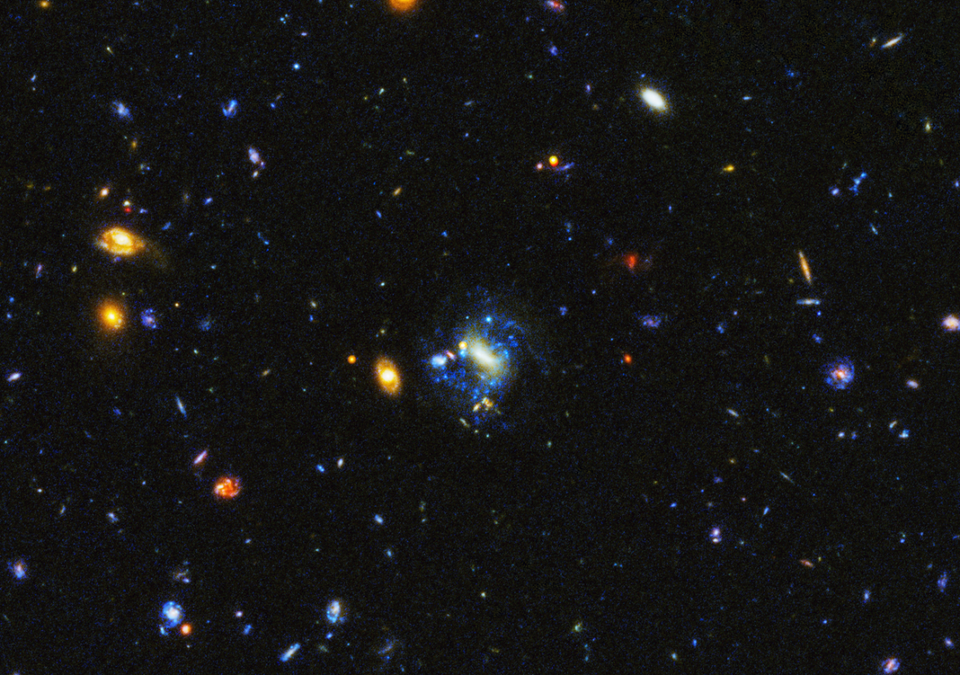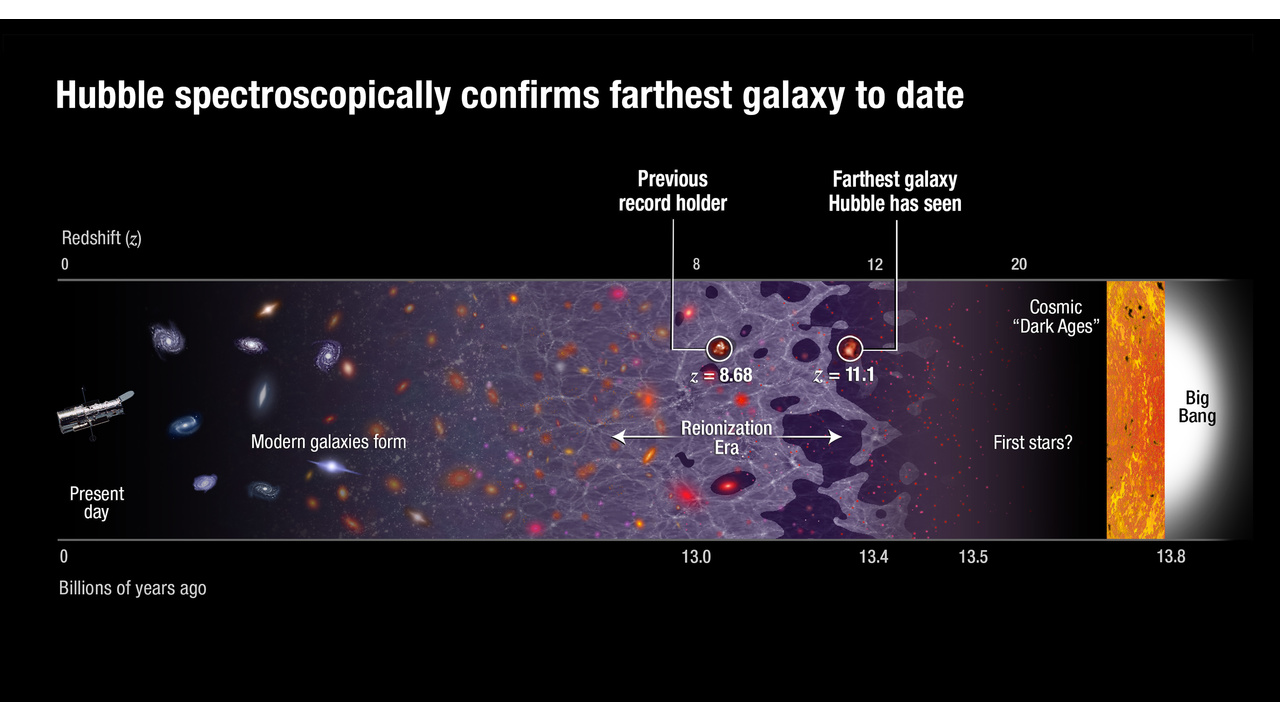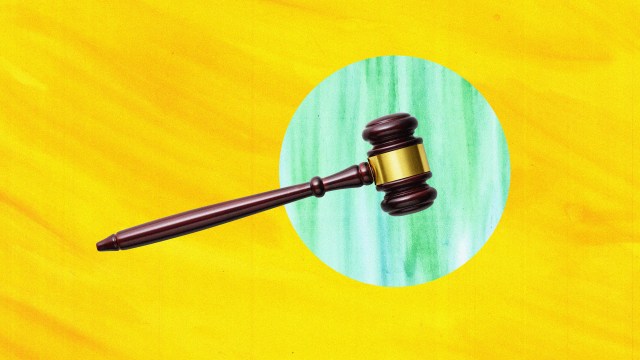Ask Ethan: What is the Universe expanding into?
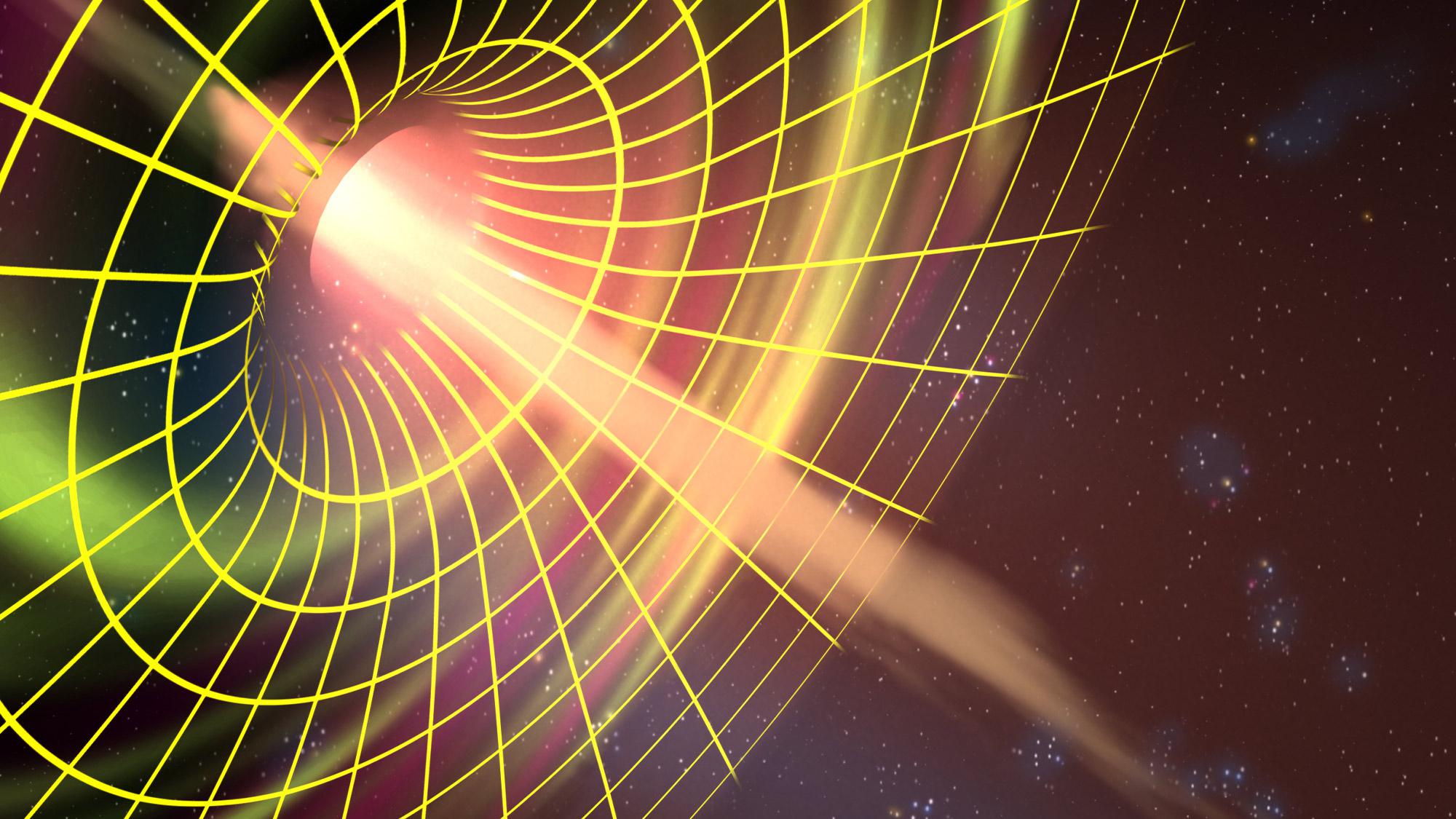
- It was back in the 1920s that we first discovered that the spirals and ellipticals in space are actually galaxies, and soon after, that these galaxies are all receding away from each other.
- When you combine that observational information with Einstein’s General theory of Relativity, you arrive at one inescapable conclusion: the Universe itself is expanding.
- We’re used to things like balloons, dough, and our waistlines: things that expand into their surrounding mediums. But what does it mean for the Universe to expand… into itself?
For nearly 60 years, the Big Bang has reigned supreme as our most successful theory for explaining our cosmic origins. Beginning from a hot, dense, matter-and-radiation-rich state, the Universe has expanded, cooled, and gravitated ever since. As it evolved, it formed protons and neutrons, the first light elements, stable atoms, and eventually, stars, galaxies, planets, and complex chemistry capable of giving rise to life. Some 13.8 billion years after it all began, here we are, observing the still-expanding Universe and working to figure out exactly where it all came from and how it came to be the way it is today.
But if the Universe has been expanding for all this time, what is it that the Universe is expanding into? That’s a common question that people have, and this week, it was asked by James Nastelli, who simply wants to know:
“One question comes to mind, just exactly what is the universe expanding into?”
The short, one-word answer to this question is as pithy as it is unsatisfying: itself. The Universe expands into itself, rather than into any definable “outside” medium. This is another example where the science of General Relativity defies our common experience and intuition, so let’s see if we can help you understand it a little bit better by unpacking the science behind the expanding Universe.
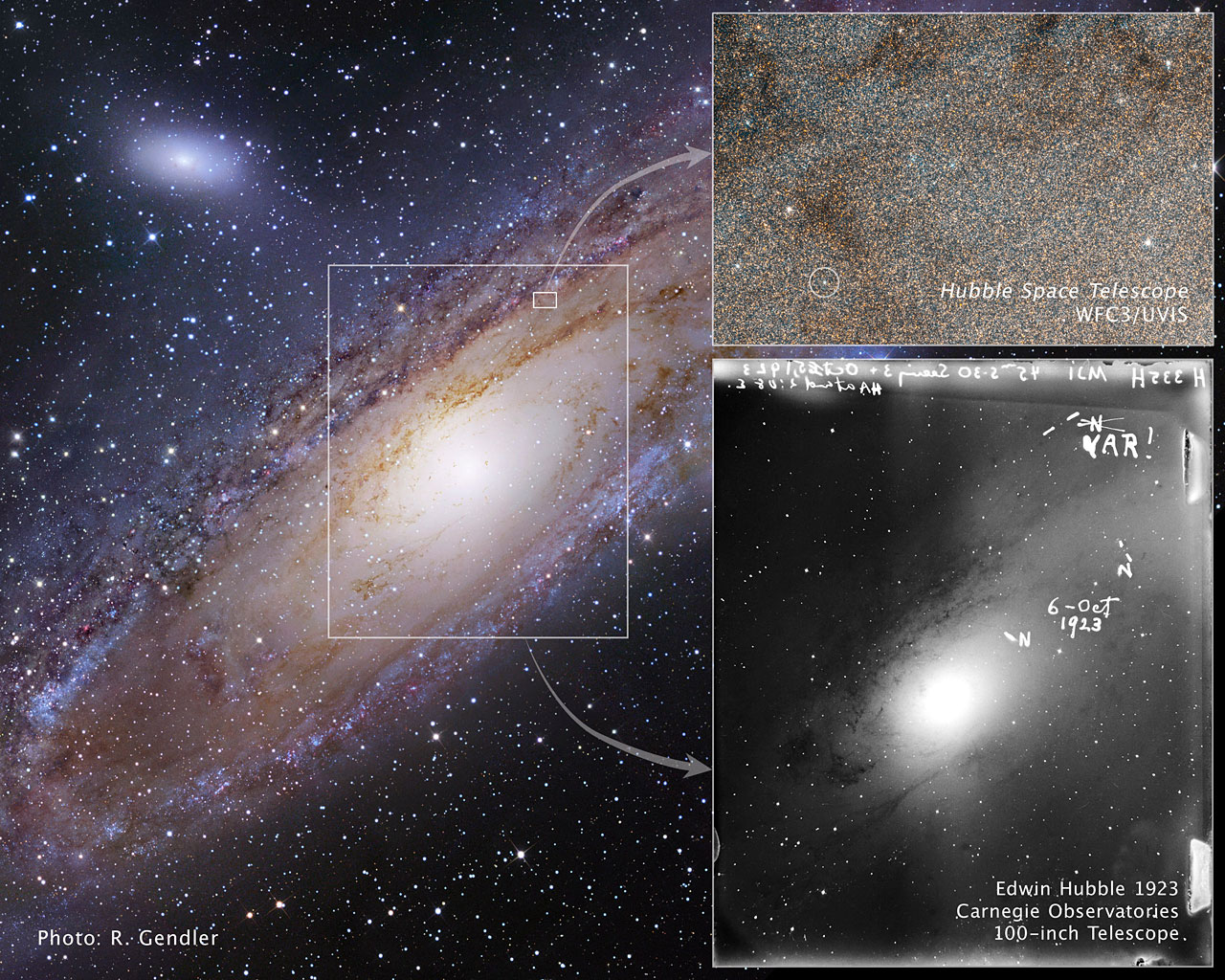
There were two pieces of observational evidence that came in at about the same time: in the early part of the 20th century. First, astronomer Vesto Slipher had been observing a variety of nebulae in the sky, leveraging a novel technique (at the time) known as spectroscopy. By breaking up the light from these objects into their various wavelengths, Slipher noted that many of them had the same spectral lines we were familiar with from the known elements, but were systematically shifted: like something had stretched them to longer wavelengths. One possible explanation was that of a Doppler shift, as though these objects were moving away from us.
Second, starting in 1923, Edwin Hubble (with his assistant, Milton Humason) began — quite by accident — identifying individual stars in these spiral and elliptical nebulae. Originally seeking to observe novae, Hubble realized that some of these “flares” were actually periodic, brightening-and-faintening variable stars. By knowing the nature of these objects and observing how bright they appeared, the distance to them could be determined.
Lo and behold, when you combined these two pieces of information, a new picture emerged: one where, on average, the farther away a galaxy was from us, the greater its light appeared to be shifted toward the redder, longer-wavelength part of the spectrum.

If this discovery had been made before Einstein’s General Relativity had come along, perhaps we would have resorted to a number of “alternative” explanations for why this was occurring.
- Perhaps there was some sort of “lossy medium” in space as light traveled through it, causing the light to lose energy as it propagated through the Universe.
- Perhaps there was some sort of intergalactic matter present, extincting the light, particularly at shorter wavelengths.
- Perhaps these galaxies were all closer together in the past, and the ones that moved faster relative to each other now wound up farther away, as higher speeds, over time, lead to greater distances.
But that wasn’t the order of events, at least, as far as our understanding of physics was concerned. We had already confirmed the predictions of General Relativity in spectacular fashion during the total solar eclipse of 1919, and had already realized that “space” and “time” were not absolute quantities in our Universe, but were woven together into the fabric of spacetime.
Putting all of these things together meant that, once we realized that the Universe was filled with matter and other forms of energy all throughout it, we couldn’t have a static-and-stable Universe. The Universe, instead, must be either expanding or contracting.
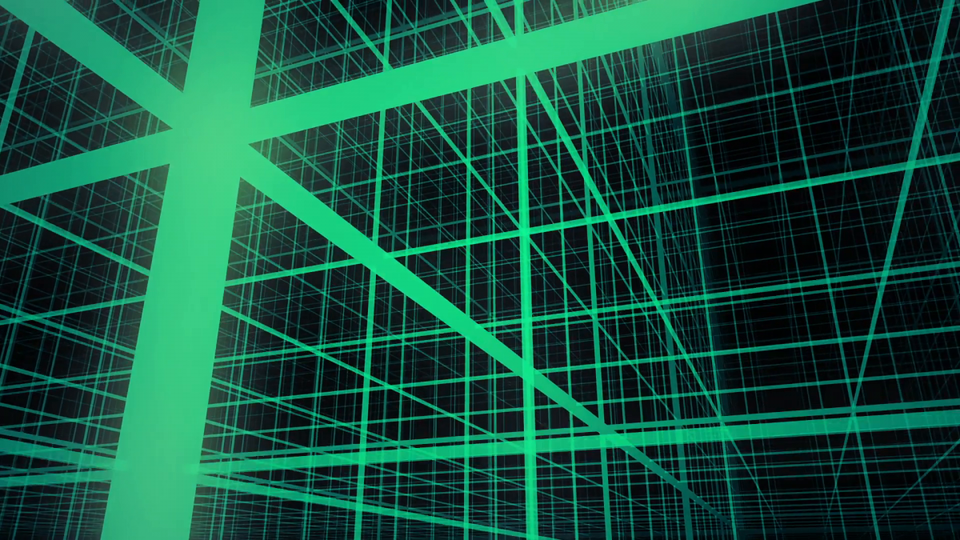
The observations pretty clearly indicated that it was expansion, not contraction, that was occurring; as is often the case in physics, when the equations reveal that there are multiple possible solutions, you have to look to the actual Universe itself to pick out which solution corresponds to your physical reality. Although, in theory, the Universe could have been either expanding or contracting, expansion is what it turns out it’s actually doing.
There are two common analogies we use to make physical sense of the expanding Universe, although each one has its limitations.
One is to treat the Universe as a balloon, and specifically, as a balloon with coins glued (or otherwise affixed) onto its surface. The expanding Universe, then, is like inflating (or blowing up) this balloon, and the coins on the surface of the balloon are analogous to the galaxies all throughout space. If you yourself are living in a galaxy — inside one of these coins — then as the Universe expands, you’ll see all the coins moving away from one another. The coins nearby you recede relatively slowly; the coins farther away appear to recede more and more quickly. It isn’t that the coins are “moving” relative to the fabric of space, but rather that the expansion of space drives them farther and farther apart with time.
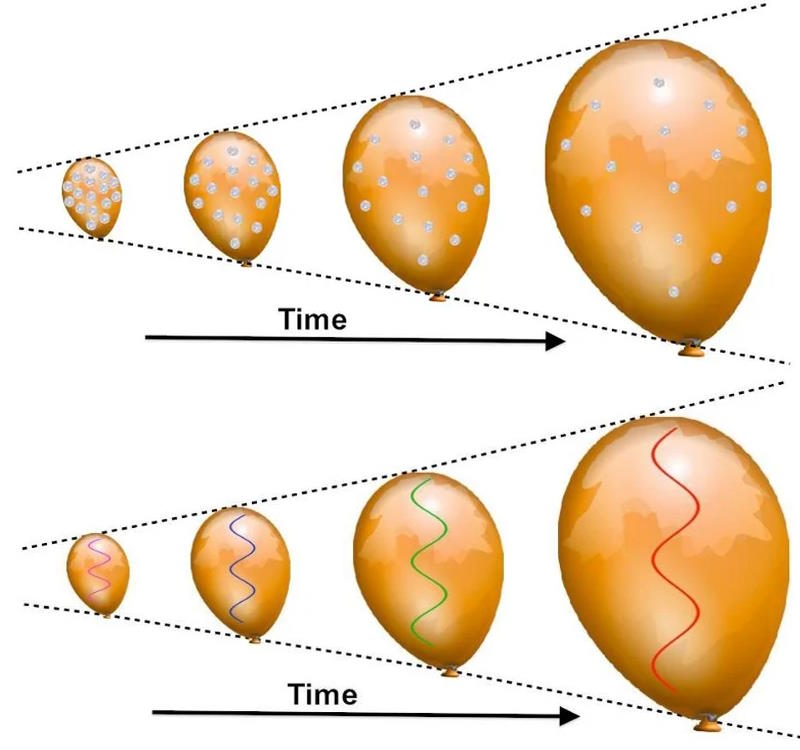
But this analogy has its flaws, for certain. The problem is that a balloon’s surface is only two-dimensional, while our Universe is three-dimensional. A balloon inflates because someone or something — usually a human — is blowing air into it in an extra spatial dimension that is unknown to inhabitants on the balloon’s surface. And the balloon, indeed, is expanding into that (extra) third dimension, whereas, in our Universe, we have no evidence indicating the presence of a fourth (or higher) extra spatial dimension. You have to restrict yourself to simply thinking about the surface of the balloon and you must ignore the “inside” of the balloon or the forces that actually cause it to inflate.
A slightly better analogy, therefore, is to consider a fully three-dimensional object that expands: like a ball of raisin bread dough, i.e., bread dough with raisins distributed all throughout it. As the dough leavens, it expands, but the raisins within it don’t. The raisins simply move farther away from one another in all three dimensions. If you’re within a raisin, you see:
- nearby raisins recede slowly,
- intermediate-distance raisins receding more rapidly,
- and the most distant raisins receding most quickly of all,
even though the raisins are actually stationary relative to the expanding dough. If the dough were transparent, it would behave like the fabric of space, while the raisins behave like individual galaxies within the expanding Universe.
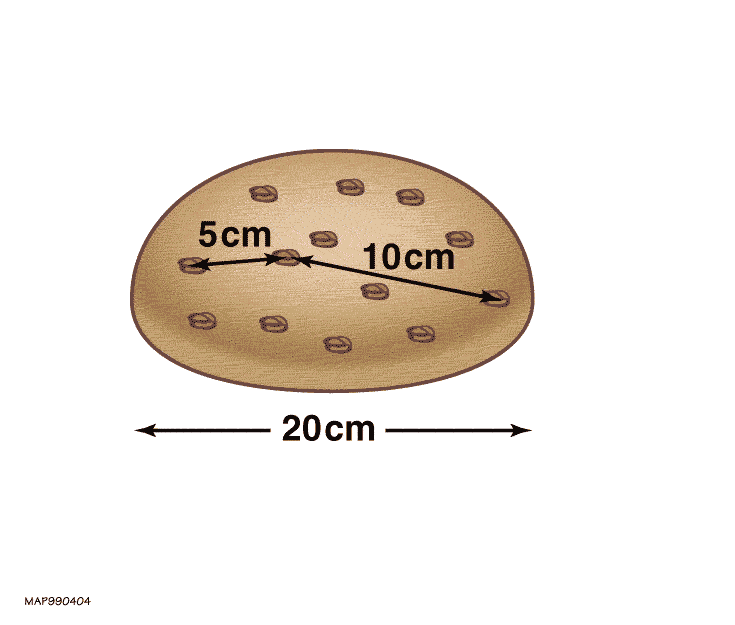
This analogy is a little bit better, because it deals with the correct number of dimensions and doesn’t rely on the presence of any dimensions that are “extra,” nor does it rely on an additional, external impetus to “blow up” or “expand” this Universe.
However, there are still a few flaws:
- there’s a limit to how much the dough can expand, governed by the biochemical reactions of yeast cells and how they convert sugars into alcohols and gas,
- the dough itself changes in properties as it expands, becoming more rarified and lower in mass density,
- and the dough still expands into something: into the air (or empty space) surrounding it at its boundary.
It’s that last point, about the dough expanding into “something,” that provides the greatest difficulty in making an analogy with the expanding Universe. Whereas the dough is an object that’s embedded within a larger reality (the full scope of three-dimensional space), the Universe itself is simply all there is. Or, at the very least, all that there needs to be.
One way to overcome this difficulty is to imagine, instead of a ball of dough (embedded with raisins) in our three-dimensional Universe, is to imagine a three-dimensional Universe that is entirely filled with this raisin-embedded dough.

We have every reason to think that our observable Universe — whose cosmic horizon is set by a combination of the expansion rate, the speed of light, and the amount of time that’s elapsed since the Big Bang — only represents a small fraction of a larger, more complete unobservable Universe. The amount that we can see and access has increased over time and will continue to do so, as light that was emitted long ago, light that’s already on its way to us, will eventually arrive for the first time, despite the continued expansion of space. Given enough time, more than double the present volume of “Universe” will eventually become visible to us.
And it’s possible, although no one is certain, that this unobservable Universe may be truly infinite in extent. It wouldn’t make sense, if this were so, to ask “What’s it expanding into?” because it’s already infinite: covering every cubic inch of “space” imaginable. Think of the following questions:
- What’s infinity plus infinity? It’s still infinity.
- What do you get if you double, triple, or quadruple infinity? It’s still infinity.
- And what happens if you multiply infinity by infinity, even if you do it in multiple dimensions? You still only get infinity.
That’s what the expanding Universe is like if it’s truly infinite, and that’s something that even many non-physicists (or non-mathematicians) can see for themselves.

Now, there’s no guarantee that the Universe is infinite, or even that the “unobservable Universe” represents the full entirety of what’s out there. It’s possible — as the theory of cosmic inflation strongly suggests — that our Universe, large though it may be, is only one region where a Big Bang occurred. Outside of that region is more space where inflation hasn’t ended, but continues on and on (for perhaps an eternity), and is pockmarked by other pockets where inflation ended and Big Bangs occur. This is commonly known as a multiverse, with no two “baby Universes” ever meeting, colliding, or overlapping.
Does this mean that our Universe is, in some sense, expanding into this inflationary multiverse?
The answer, perhaps surprisingly, is no. The biggest difference between a balloon, a ball of dough, and our actual Universe is not what’s inside or outside of it, nor what its boundaries are or whether it has them. It’s that when we talk about space, or spacetime, or the fabric of the Universe itself, we’re talking about everything that there is: it’s the stage upon which the play of the Universe takes place. There are rules, of course:
- the players are the particles and antiparticles and other quanta of energy,
- the governing rules are the laws of physics and the values of the fundamental constants,
- and the stage itself is not fixed, but rather is an evolving entity,
but there’s no “outside” or “beyond” to the cosmos; it is simply all there is and ever was and ever will be.

And that’s the biggest thing to wrap your head around. When it comes to the expanding Universe, it isn’t expanding into anything, because there isn’t anything else above, beyond, outside, or before or after space-and-time. All at once, it’s both everything and nothing: everything because it contains all that exists, and nothing because if you take all the matter, radiation, and quanta that exist within it away, it still persists: the nothingness of empty space itself. That’s what the fabric of spacetime is, and that’s why it can’t expand “into” anything: it itself is a fundamental part of our reality.
That’s why, when you ask, “What is the Universe expanding into?” the best answer we can give is “itself.” The key realization is to stop thinking of the Universe as a thing that evolves in some larger, greater context; it’s perfectly reasonable to think of it as all there is, and to simply recognize that expansion and contraction are properties inherent to space itself.

It still remains possible that there is some higher-dimensional perspective that it would make sense to treat our Universe as expanding into, just as a two-dimensional surface-of-a-balloon expands in three dimensions, but there is no evidence to favor this idea. It’s simply, at present, one fascinating possibility that cannot be ruled out. But it also isn’t necessary; the Universe doesn’t require something else to expand into. Simply existing, and getting less dense, is something it can do all on its own.
Send in your Ask Ethan questions to startswithabang at gmail dot com!



